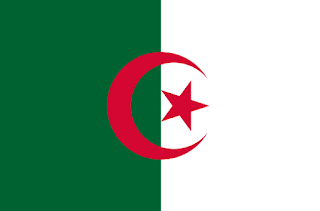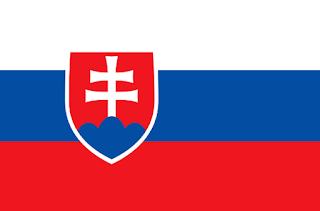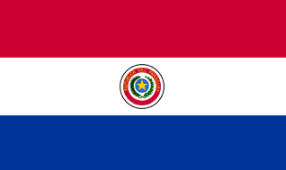FACTS ABOUT NIGER
AMAZING
FACTS ABOUT NIGER
1.
The official name of Niger is the
“Republic of Niger”.
2.
Niamey is the capital city of Niger.
3.
The total population of Niger is 18,638,600.
4.
The natives of Niger are called
Nigeriens.
5.
The West African CFA franc (XOF) is the official
currency of Niger.
6.
Niger shares a border with Libya,
Algeria, Benin, Burkina Faso, Mali and Chad.
7.
The river is 4,180 kilometers in length
(2597 miles).
8.
At 4,180 km long it stands as the third
longest river in Africa, the only rivers longer than it is the Nile and the
Congo, which is also known as the Zaire.
9.
Unlike the Nile that is unclear, the
Niger is clear over the whole course. This is attributed to an absence of silt.
10.
The river floods annually, the flooding
season begins in September and ends in May.
11.
The source of the river is the Guinea
highlands located in Southeastern Guinea.
12.
The river’s main tributary is the Benue
River.
13.
The flow of this river has been
described as unusual. It begins flowing 150 miles away from the Atlantic Ocean
but instead of going straight to the Ocean it curves inwards flowing through
the countries of Mali, Niger, Benin, and Nigeria then finally discharges
through the Niger Delta/Oil Rivers into the Gulf of Guinea.
14.
The Scottish Explorer, Mungo Park, was
the first known Westerner to travel through the course of the Niger. He did so
in the year 1796.
15.
The river has thirty-six families of
freshwater fish and nearly 250 fish species, twenty of these are found nowhere
else on the planet.
16.
The official language is French. This is
inherited from the colonial period and serves as an administrative language.
17.
In the same vein, the country has eight
languages that are also classified as national languages; these are mostly the
ethnic languages of the groups associated with the language.
18.
The nation is a secular state with the
separation of religion and state guaranteed in the constitution. The most
dominant religion practiced in Niger is Islam, with about 80% of the populace
identifying themselves as Muslims.
19.
Christians form about 20% of the
populace with a small majority of the population practicing indigenous
religions.
20.
Indigenous communities have annual
festivals with the two most prominent being the ‘Salt Cure’ festival, a
celebration of Tuareg nomads to celebrate the end of the rainy season and a
colorful courtship ritual that is practiced by the Wodaabe which was known as
the Guerewol festival.
21.
The main staple food of Niger is millet.
22.
Traditional sports such as horse racing,
camel racing, and wrestling still survive and form a focal point in the
socialization of the people.
23.
The National Day/Republic Day is
celebrated on December 18 since the year 1958. It also celebrates the founding
of the republic and the Presidency.
24.
There do exist several cities, towns,
and villages that have preserved on account of their architecture, some like
those in the Djado plateau are largely uninhabited whilst others such as Agadez
and Zinder are alive.
25.
Niger is a landlocked country with over
80% of land being arid.
26.
A mere 2.8% of the total land area in
Niger is cultivated.
27.
The country’s last census report (2002)
indicated that 90% of the country’s workforce is engaged in Agriculture whilst
industry and commerce employ 6% of the workforce, and the government employs
the remaining 4% of the citizens.
28.
The nation has a single trade union
federation, The Union of Worker’s Syndicate of Niger. The head of the Union is
appointed by the Government and most members are state employees.
29.
The mains agricultural export from Niger
is peanuts; the second largest agricultural export is cotton.
30.
A mere one percent of Niger’s total
surface area is under forest cover.
31.
Uranium is Niger’s largest mineral
export. The country is ranked fifth in Uranium production globally.
32.
Minerals that Niger has in abundance
include gold, iron ore, sulfates and a raft of other minerals that are
untapped.
33.
As of the year 2003, the country had
crude oil reserves of close to 300 million barrels of fuel. Because of lack of
refining capacity, however, the country has to rely on imports for refined
petroleum.
34. Commercial fishing is nonexistent as an
industry and most of the catch is consumed domestically.
35.
Niger is on the border between Sahara
and Sub-Sahara region.
36.
The capital of Niger is Niamey.
37.
Niger borders seven countries.
38.
The countries bordered are Libya to the
North East, Chad to the East, Nigeria and Benin to the South and South West,
Senegal and Mali to the West and Algeria to the North West.
39.
The longest border is with Nigeria that
lies in the South.
40.
The lowest point in the country is in
River Niger.
41.
The highest point in the country is in
Mount Idoukalan – Taghes in the Air Mountains.
42.
The climate of Niger is subtropical
climate which means it’s hot and dry.
43.
Niger has a population of 18,638,600
(July 2016 est.)
44.
Present day Niger stands on what was
previously the empires of Mali and Songhai.
45.
With a land area of 1,267,000 km square
km, Niger is the largest country in West Africa.
46.
Niger is one of the poorest nations on
the earth with a UN Human Development Index of 2014 ranking it as 188th in the
world.
47.
Niger has a rich cultural history having
been the stomping ground of some of Africa’s most notably empires and kingdoms.
The Songhai Empire and the Mali Kingdom were domiciled in this territory.
48.
Niger has had seven republics and four
military regimes since its inception as a state in 1958.
49.
Niger teems with wildlife with the two
most prominent Parks being the W National Park and Abaaba National Park.
50.
The country has one of the world’s
largest protected reserves covering 7.7m Ha land. Cheetah, Oryx, and
different gazelle are to be found on this territory.
51.
Dinosaur remains are also to be found in
an area within the Sahara desert.
52.
Tuareg men wear blue dyed veils across
their eyes and were referred to as the “Blue Men” of the Sahara Desert in
bygone times.
53.
Niger is considered one of the hottest
nations in the world and is aptly nicknamed the “Frying Pan of the World.”
54.
The country is divided into seven
regions with a single Principal District, the capital, Niamey.
55.
Niger Exports:
uranium ore, livestock, cowpeas and onions.
56.
Niger Imports:
foodstuffs, machinery, vehicles and parts, petroleum and cereals.
57.
The internet country code for Niger is .ne.




Comments
Post a Comment